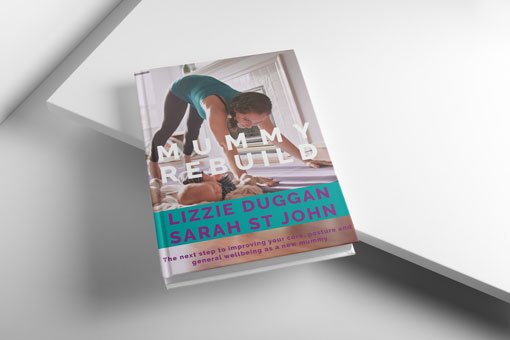How does abdominal separation, diastasis recti or recti diastasis affect everything?
How does abdominal separation, diastasis recti or recti diastasis affect everything?
There are varying degrees of diastasis and in more extreme cases potential problems can arise much quicker so I am going to talk about all of it.
The rectus abdominus is our “6 pack” muscle if you like (yes we do all have them), that runs down the front of the body, attaching from the pubic crest and pubis symphis bone into the costal cartilages of ribs 5-7 and xiphoid process of the sternum.
As you already know, when we are pregnant, our ligaments loosen (to allow for childbirth) and our insides all get gently moved around as our babies grow.
The rectus abdominus gets stretched and gently comes apart and depending on the size of your baby, it will be more in some women than others.
When your baby has arrived, your womb contracts down and things slowly start to return to around about where they should be. The abdominals often come back together, but not in all cases, and you can be left with a gap around, above and below the belly button, ranging from 2 fingers to in some cases 5 fingers, which can become a real problem.
It is so important to work on bringing these muscles back together and restoring function into the body.
If the abdominals are apart, your abdominals aren’t working properly,therefore to do all of the things that a new baby demands from us, like lifting, carrying and pushing, all of the strain goes into the lower back as the abdominals just can’t do it.
This can cause long term back issues.
Also, as the abdominals haven’t been working and are weakened and the back takes over you keep that typical “mum posture” of pelvis tilted forward (lower back arch) rounded shoulders and chin forwards, thus causing neck and upper back pain.
Can you see how much this posture pushes into the already weakened abdominals?

Another point I would like to talk about is the effect diastasis has on your pelvic floor.
Ready?
As you can see in the picture, the pelvis is tilted forwards which causes this arch in the lower back. Your pelvic floor attaches to the inside front of the pubis, to the sacrum and coccyx.
Your coccyx is your tail bone that sits right at the bottom of the spine, in-between the bottom cheeks, if you want to check it out.
So, as you are arching your back in this posture you are also stretching and weakening your pelvic floor muscles, just by the way you are standing!
When you think about it that way, it makes sense why a lot of women with diastasis recti also suffer from stress incontinence and why a change in your posture can be so powerful.
Hernia
Now last – but certainly not least – I wanted to talk about another issue that can be developed through abdominal separation and that is Hernia.
Through your weakened abdominals, you can develop an umbilical herniawhich is where your insides can protrude through your abdominal gap, this can be uncomfortable and make you feel pretty rubbish.
So as you can see, having a gap in your abdominals can affect more than you may have first thought.
Wow that was a lot to get out 😊 but hopefully, you are becoming more informed about why it is good to know if you have it for starters and why it is important to address it. After all, Knowledge is Empowerment.
Feeling lost?
If you don't know where to start with your rehab and are feeling lost, then we're here to help you. Just hit the button to send us an email and we'll be in touch.
We can offer you the guidance and support you need to find the right kind of core rehab no matter your issue and without any judgment.
Sometimes the first step is just asking for help. We're here for you.
Call us on 07881 526 694 or email info@completecorecontrol.com
Mummy Rebuild – Online Course, Downloadable PDF and Video Access
£97.00
The next step to improving your core, posture and general wellbeing as a new mummy.
This is our postnatal course tailored especially for new mums.
We regularly get asked what we would advise as to the first thing to do after having your baby with regards to exercise. Well firstly remember you don’t want to be starting a fitness routine before six weeks post vaginal birth or 12 weeks post-c-section.
We truly believe for our postnatal mummies that our Mummy Rebuild Course is the best option for you to ensure you fix your body correctly, work on bringing those tummy muscles back together, slowly re-building the strength in the abdominals and gaining the strength back to keep up with a growing baby with ease.
Our bespoke 6-week body rebuilding formula uses a combination of exercise techniques including Hypopressives, Pilates and functional fitness to help you start making changes to your life as soon as you are ready.
You will be taken step by step through this training with comprehensive videos to demonstrate specific techniques that reduce the pressure in the body, gently show you the way back from having your baby, build strength in the musculoskeletal system and fix any pelvic floor weakness or abdominal separation you may have unlike any other fitness programme currently out there.
Mummy Rebuild is tailored specifically for you, by us based on years of experience to really provide you with the most up to date information and strategies to help you safely get back to your health and fitness goals.


